Nairobi National Park - An Urban Safari Haven in the City
Nairobi National Park is one of Kenya’s most celebrated national parks and an exceptional example of nature’s resilience in an urban environment. Despite being located just minutes away from the bustling city centre of Kenya’s capital city, this park offers wildlife lovers an unparalleled opportunity to witness African wildlife in its natural habitat.
In this guide, we will explore every facet of Nairobi National Park—from its rich history and conservation efforts to the best times to visit and top attractions like the Nairobi animal orphanage, the giraffe centre, and the historic ivory burning site monument.
A Brief History and Unique Background
Established in 1946, Nairobi National Park is Kenya’s first national park and one of the only national parks that is uniquely located within an urban sophistication with raw wilderness. Covering approximately 117 square kilometers, the park’s boundaries stretch from the main gate near the city’s capital to the western uplands and southern boundary areas, where open grass plains meet rocky gorges. This rare blend of natural beauty against the backdrop of Nairobi’s skyline creates an unforgettable safari walk experience for visitors.
Historically, Nairobi National Park has played an important role in conservation and education. It has been the site of successful rhinoceros sanctuaries, where black rhinos have found a refuge in a natural habitat near the city centre.
Conservation efforts here have not only helped to save endangered species but have also brought together local communities and environmental advocates, including groups linked with the KWS headquarters and Kifaru Ark, reinforcing the park’s status as a leading sanctuary for African wildlife.
Wildlife in Nairobi National Park
Nairobi National Park is home to an impressive variety of wildlife, making it a prime safari destination. Visitors can spot the Big Four—lions, leopards, buffalos, and rhinos—within the park. Unlike other major parks in Kenya, elephants are not present due to the park’s limited size and proximity to the city.
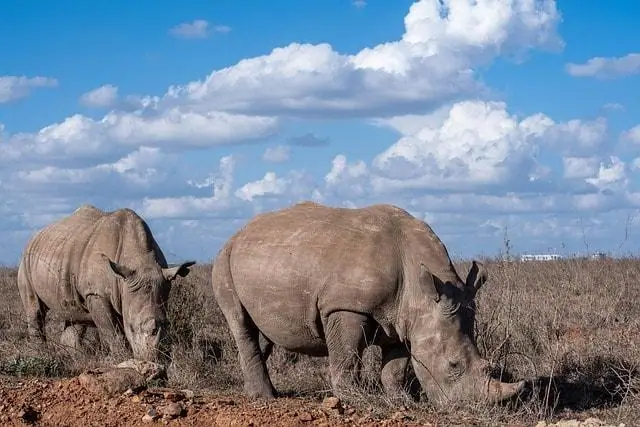
Key Wildlife Species
- Black and White Rhinos – The park is a major sanctuary for black rhinos, a critically endangered species. It plays a crucial role in rhino conservation efforts in Kenya.
- Lions and Leopards – Nairobi National Park is home to a healthy population of lions and the elusive leopard, which can sometimes be spotted resting in trees.
- Buffalos, Zebras, and Giraffes – Large herbivores such as buffalos, zebras, and giraffes roam freely across the grasslands.
- Cheetahs and Hyenas – Though rarer, cheetahs can occasionally be seen hunting in the open plains, while spotted hyenas are common scavengers in the area.
- Hippos and Crocodiles – The park’s rivers and seasonal wetlands provide habitats for hippos and Nile crocodiles.
- Over 400 Bird Species – Birdwatching enthusiasts can enjoy sightings of secretary birds, ostriches, crowned cranes, and the endangered grey crowned crane.
Main Attractions in Nairobi
The Iconic Main Park Entrance and Surrounding Areas
Entering Nairobi National Park through the main entrance is like stepping into a different world—one where the sounds of the capital city fade away, replaced by the calls of wild animals and the rustle of acacia trees swaying in the breeze. This gateway marks the beginning of a journey that leads visitors to breathtaking landscapes, from the expansive open grass plains to the serene banks of the Mbagathi River.
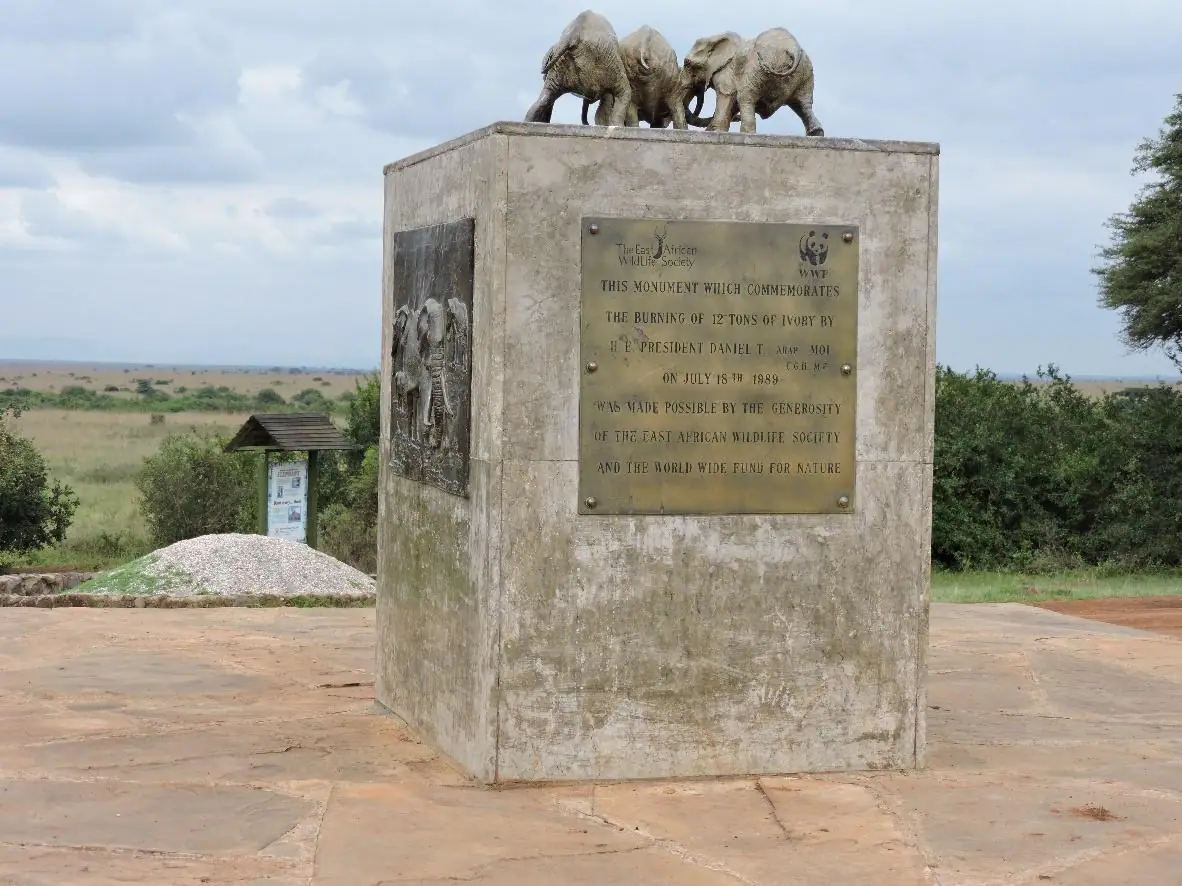
The Ivory Burning Site Monument
A visit to Nairobi National Park is not complete without stopping by the ivory burning site monument. This historical site holds a powerful story of conservation and defiance against the ivory trade. In 1989, Kenya took a bold step by burning massive stockpiles of ivory—a move that symbolized the nation’s commitment to protecting its wildlife. Today, the monument stands as a reminder of that pivotal moment in conservation history, inspiring visitors to appreciate the park not just as a recreational area, but as a living testament to environmental activism.
Nairobi Animal Orphanage: A Beacon of Hope
Another gem of the park is the Nairobi animal orphanage, a sanctuary dedicated to rehabilitating rescued animals. The orphanage works tirelessly to nurse injured or orphaned wildlife back to health, including lions, cheetahs, and various herbivores. For wildlife lovers, this facility offers a touching glimpse into the park’s broader conservation mission and highlights the compassion that drives many local communities to support these efforts.
Picnic Sites: Kingfisher and Mokoyiet
For those who wish to enjoy a leisurely day under the African sun, Nairobi National Park offers several picnic sites, with the Kingfisher picnic site being particularly popular. Ideal for families and groups, these picnic areas are set in scenic locations with panoramic views of the park’s landscape, allowing you to dine amidst wild animals and under the watchful eyes of the park’s native birds. The Mokoyiet picnic site is another favorite, offering tranquil spots perfect for relaxation and bird watching during the early morning hours.
Impala Observation Point: A Photographer’s Dream
At the impala observation point, the natural beauty of Nairobi National Park is on full display. This spot is a must-visit for photography enthusiasts and wildlife lovers alike. With the city centre in the distance and the park’s varied wildlife population roaming freely, the observation point offers an unparalleled opportunity to capture the unique blend of urban sophistication and wild beauty that defines this national park.
Climate in Nairobi National Park
Nairobi National Park enjoys a moderate climate throughout the year. The temperature ranges between 10°C and 26°C, making it a comfortable destination for tourists. The park experiences two rainy seasons:
- The Dry Season: Optimal Wildlife Viewing
During the dry season—typically from July to October and again from January to February—the park transforms into a prime location for game viewing. With the vegetation sparser, wild animals tend to congregate around water sources, such as the permanent river that runs through the park.
This makes it easier for visitors to spot predators like lions and leopards as well as large herbivores, including the celebrated black rhinoceros. The dry season is also ideal for self drive tours and early morning game drives, when the cool air and soft sunlight create perfect conditions for photography.
- The Wet Season: Lush Landscapes and Bird Watching
In contrast, the wet season—spanning from March to May and October to December—brings a burst of life and color to Nairobi National Park. The wet season transforms the park into a lush, vibrant environment where wild animals roam in abundance, and the array of bird species is at its peak.
For bird watchers, this is a golden opportunity to witness over 400 bird species, including the striking secretary bird and various kingfishers. However, while the wet season offers incredible natural beauty, it also means higher chances of rain, so be sure to pack appropriate clothing and perhaps plan for hot water showers after your adventurous day.

Experience
Accommodations and Local Services
For those looking to extend their visit, there are a variety of accommodation options near the park. Many lodges and hotels offer hot water showers, comfortable rooms, and guided tour packages that include visits to both Nairobi National Park and other nearby attractions like the giraffe centre and giraffe manor. These accommodations are designed to blend luxury with the natural charm of Kenya’s wilderness, ensuring that your stay is as comfortable as it is adventurous.
Connecting with the Local Communities
An often-overlooked aspect of visiting Nairobi National Park is the opportunity to engage with local communities. Many local artisans and vendors operate in and around the park’s boundaries, offering handcrafted souvenirs that celebrate the unique blend of urban and wild. By purchasing local crafts, visitors support community development initiatives and contribute to ongoing conservation projects in the area.
Best Time to Visit
The best time to visit Nairobi National Park is during the dry seasons, which fall between July to October and January to February. During these months, the sparse vegetation makes it easier to spot wildlife, and animals gather around waterholes, increasing the chances of seeing a variety of species in one location.
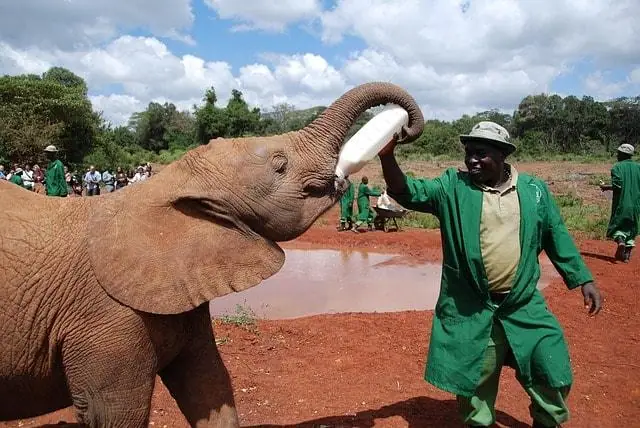
Things to do in Nairobi National Park
- Game Drives
Game drives in Nairobi National Park provide thrilling opportunities to see a wide range of wildlife in their natural habitat. Visitors can choose between morning and evening game drives, both offering unique experiences. The early morning drive is ideal for witnessing predator activity, while the evening drive captures the stunning golden hues of the African sunset.
- Photography Safaris
The park’s combination of wildlife and urban scenery makes it an extraordinary destination for photographers. Capture stunning images of giraffes silhouetted against the city skyline or lions resting in the golden grasslands.
- Walking Safaris
For a more immersive experience, visitors can participate in guided walking safaris. These allow for a closer encounter with the park’s ecosystems, including its diverse plant life and smaller animal species.
- Birdwatching
Nairobi National Park is a paradise for bird lovers, with over 400 bird species recorded. Some of the notable birds include:
- Secretary bird
- Kori bustard
- Martial eagle
- African fish eagle
- Various kingfishers, herons, and weavers
- Visit the David Sheldrick Wildlife Trust
Located near the park, the David Sheldrick Elephant Orphanage is a must-visit for animal lovers. This sanctuary rescues and rehabilitates orphaned elephants before reintegrating them into the wild.
“We visited three Kenyan national parks: Ambuseli, Nakuru Lake and Masai Mara. The distance among the three place is considerable, therefore we spent a lot of time in the car. We had a personal driver who always took care of us and a van just for us.“
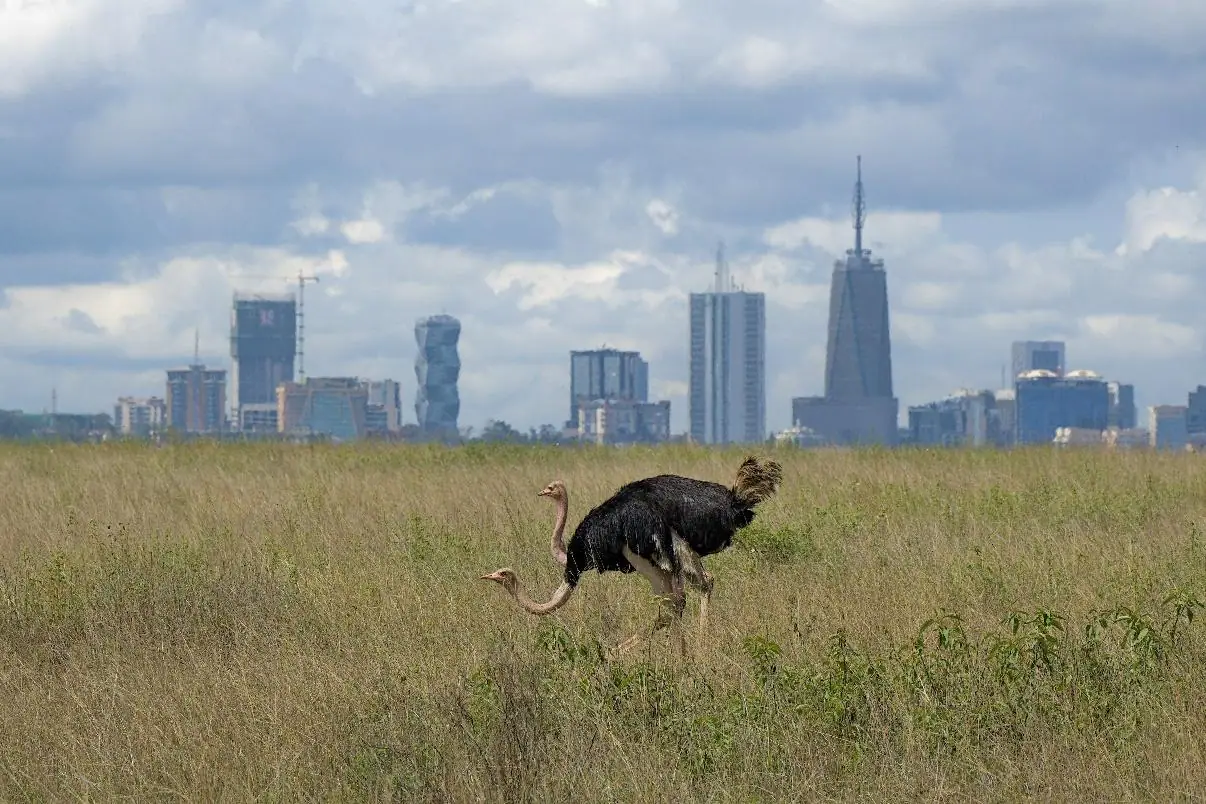
Practical Tips and Insider Information for an Unforgettable Visit
Preparing for Your Visit
Before you set out on your Nairobi safari walk or plan a day trip to visit Nairobi National Park, consider these practical tips:
- Weather Check: Since the park experiences both a wet season and a dry season, check the forecast to pack appropriately. A light rain jacket might be necessary during the wet season.
- Comfortable Attire: Wear neutral-colored clothing to blend in with the surroundings and avoid attracting unwanted attention from wild animals.
- Safety First: Always follow the guidelines provided by park rangers. Whether on a game drive or a walking trail, staying within designated boundaries ensures a safe experience for both visitors and animals.
- Hydration and Snacks: Carry water and snacks, especially if you plan to explore the walking trails or head to remote picnic sites like the Kingfisher picnic site.
- Camera Gear: For photography enthusiasts, a good quality camera with a zoom lens is essential to capture the varied wildlife and panoramic views of Nairobi’s skyline.
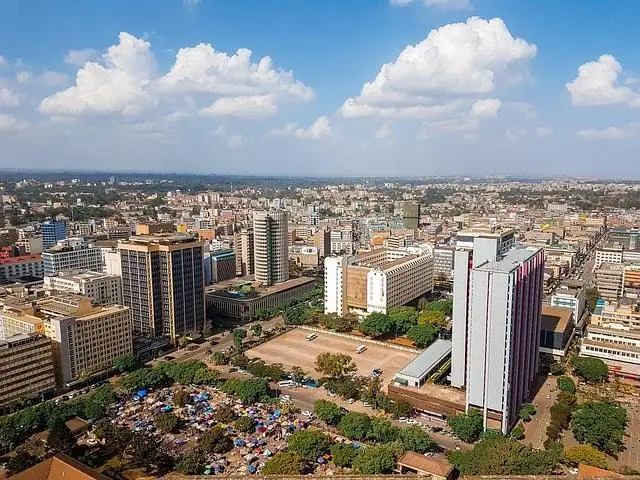
Conservation Efforts and Community Engagement
Conservation at Its Core
Nairobi National Park is a model of conservation success in East Africa. The park plays a vital role in preserving the varied wildlife population, from the majestic lions to the critically endangered black rhinoceros. The establishment of successful rhinoceros sanctuaries within the park has helped stabilize the population of these magnificent animals.
Efforts led by local communities, conservationists, and national organizations like the Kenya Wildlife Service (KWS headquarters) ensure that the park remains a safe haven for wildlife despite the rapid expansion of Nairobi’s urban area.
The Role of Education in Conservation
Education is a fundamental pillar of Nairobi National Park’s mission. Programs such as the education Nairobi National Park initiative offer visitors—especially school groups and young nature enthusiasts—the opportunity to learn about African wildlife and conservation practices. These educational tours provide insights into the challenges of protecting natural habitats in a rapidly developing region, emphasizing the need to balance urban growth with environmental preservation.
Community Involvement and Local Partnerships
Local communities are deeply intertwined with the park’s ecosystem. By collaborating with nearby communities, the park ensures that conservation efforts are sustainable and that the benefits of tourism are shared. Many local artisans and vendors operate near the main park entrance, selling crafts and souvenirs that celebrate the park’s heritage. These initiatives foster a sense of stewardship and ensure that the park’s natural resources are preserved for future generations.
Highlights
- Close Proximity to Nairobi: The park’s unique location allows for a quick escape into nature without leaving the city.
- Black Rhinoceros Sanctuary: Home to one of the highest densities of black rhinos, making it a critical area for their conservation.
- Diverse Ecosystems: From open grasslands to dense forests and riverine habitats, the park’s varied landscapes support a wide range of wildlife.
- Walking Trails: Designated walking trails allow for guided nature walks, offering a different perspective on the park’s flora and fauna.
- Historical Ivory Burning Site: A significant site where Kenya burned ivory stockpiles in 1989 to combat poaching and raise awareness
Experience the magic of Nairobi National Park and discover a unique urban safari destination where every visit is an invitation to explore, learn, and marvel at the wonders of African wildlife. Start your journey with Seremara Safaris today and discover why this park remains a cherished sanctuary for both nature enthusiasts and those seeking an escape from the city’s bustle.
What Our Clients Say About Kenya Holiday Safaris
Posted onVerified An incredible trip with Seremara Safaris! We recently returned from an incredible trip organized by Benson at Seremara Safaris, and we couldn’t be happier with the experience. Like many, we were initially a bit nervous booking online, but Benson was absolutely amazing from start to finish. Everything was flawlessly arranged, and we never had to worry about a thing.Benson coordinated our entire journey - from airport transfers in Nairobi, hotel stays, domestic flights to the Masai Mara and Diani Beach, and all accommodations and transfers in between. His attention to detail was impeccable, and his recommendations for places to stay were spot-on.We spent two nights at Basecamp Masai Mara and one night at Eagle View. We had a great time at Basecamp and wouldn’t change that part, but we absolutely loved Eagle View and would definitely spend two nights there next time as well! Whilst on safari we saw a huge number of animals, including four of the big 5. We had great guides in both camps, but worth a special mention to Safari Steve who was amazing! He was so informative and very passionate, which was infectious. A particularly thoughtful touch was Benson coming to meet us personally at the airports twice during our trip just to check in and make sure everything was going well. That level of care really stood out.We've been enthusiastically recommending Seremara Safaris to all our friends since coming home, and we would happily book with Benson again. Thank you for making our trip so special!Posted onVerified amazing service & reasonable price we lived amazing experience with amazing guides , very kind and helpful everything was exactly like what they promised i liked their honesty and flexibility , i get a reasonable price ,the service and the experience absolutely worth itPosted onVerified Excellent organization of the whole trip to Samburu. Excellent planning and smooth operation of our tour to Samburu. Benson arranged the trip complete with flights, accommodation, vehicle and our very own very knowledgable guide Jackson. One of the best wildlife trips we’ve been on from beginning to end!Posted onVerified Trip of a lifetime Seremara Safaris provided my daughters and me with the trip of a lifetime. Benson Ndunyu, tours manager, designed a safari specifically to meet our needs and desires. He was prompt with responses, professional, personable and added touches that went above and beyond. Our guide Jack was knowledgeable, outgoing, intelligent, and funny. Our safari was affordable and intimate. It was just the three of us with Jack in the vehicle which enabled us to determine how long to watch certain animals, which animals to look for and ensured that we could always see the animals easily. We did indeed see every animal we hoped to see and learned about their behaviors and interconnectedness. Driving rather than flying between parks gave us the opportunity to see different parts of Kenya and to learn from Jack about the various tribes and cultures we passed. I highly recommend Seremara Safaris for an experience you will never forget and always cherish.Posted onVerified Amazing time! I discovered Benson through this Safari Bookings site, but I also got 2 quotes from other travel agents that were recommended by friends who lived in Kenya. We wanted to go to Diani Beach after, and Benson was the only one who worked with me to find a direct flight to the coast and also negotiated with the airline to get a better price. All the other agents just said I had to fly back to Wilson Airport first, and weren't very flexible nor helpful. Benson also helped to book us the SGR train back from Mombasa to Nairobi, as online bookings require mPesa which I don't have as a non-Kenyan.The other tour operators just offered one place to stay all 3 nights, but Seremara had the option of 2 nights in the Mara and 1 night in Naibosho. To be honest, I had no idea what the difference was at the time, so I never would have considered this on my own, but I'm glad that Benson's tour package offered this. It really is great to experience time in Maasai Mara and a night in one of the adjoining private conservatories, because you get different experiences.Overall, my husband and I had an amazing time and we would highly recommend you travel with Seremara!Posted onVerified Excellent Kenya Safari Before visiting Kenya we had high expectations of what an African Safari holiday should be like. These expectations were exceeded because the personalised service was excellent and very aligned with our needs. The travel was comfortable , the game viewing spectacular and hotels service was world classPosted onVerified Outstanding!!! A big thank you to Benson for arranging a truly once in a lifetime experience.From start to finish our visit to Kenya has been exceptional and that is all down to Benson and his brilliant organisation.From airport transfers to arranging a five day excursion (Nairobi Day Tour,4 Day Nakuru/Masai Mara Safari) the trip was faultless in every aspect.Thomas was a fantastic guide and we managed to see the Big 5 within half a day of being at the Mara due to his incredible knowledge and experience!The accommodation (Cliff - Nakuru,Kichwa Tembo - Masai Mara) were both perfect and we thoroughly enjoyed every moment!Sunrise Hot Air Ballon Tour is an absolute must!Thank You/Asaanti Kenya you’ve been true a pleasure!🙏🏽Posted onVerified Benson went above and beyond to accommodate our needs and ensure we had an excellent trip Seremara Safaris had amazing attentive staff and guides who went above and beyond to accommodate our wants / needs. We had outstanding safaris in the park and conservancy. Our accommodations were beyond expectations, the meals were excellent as well. We had so many unforgettable experiences and encounters. I would highly recommend booking with Seremara Safaris to ensure a seamless trip.Posted onVerified Wonderful for Solo Travellers! I used Seremara Safari to book my trip to the Masai Maara and it was wonderful. I felt completely safe a a woman solo traveller and will definitely use them again when I return to Kenya!!Posted onVerified Excellent Seremara Safaris booked a wonderful 3-night safari at Basecamp and Leopard hill. Our guide Tonkei was amazing, we saw leopards, lions, hyenas, elephants, buffalo, hippos, and even a cheetah kill. The basecamp staff and Leopard hill staff were so friendly and kind. We felt so cared for throughout our stay, especially mealtimes.Benson was a great communicator, giving us a link to the e-visa for Kenya, and details about each camp. We were 3 friends that wanted to be in the same tent, and all that worked out splendidly. My friend had never been to Kenya before this trip and left saying she was excited to come again. Thanks Seremara!
BOOK TODAY and enjoy a 10% DISCOUNT on an unforgettable safari experience with Kenya Holiday Safaris!
